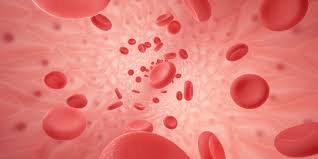Many pathogens lead to the rapid shutdown of organs, causing death by sepsis. This can be prevented by tailored administration of antibiotic therapy for the specific pathogen causing the risk of infection.

Death by Sepsis has been the leading reason in 11 million cases out of 48.9 million cases, in 2017. Alarmingly, the number of cases in infants is said to be half the total number which is 20 million deaths. These can be reduced in optimum numbers if there is a timely screening and isolation of the infection-causing pathogen with the apt antibiotic treatment.
Sepsis in children is fast, as they have a low volume of blood and an immature immune system causing 2.9 million deaths in kids, below age 5.
Early Method of Pathogen Detection
Microbe detection in traditional laboratories is done in two long time-consuming steps which take 2 to 3 days, to get a result. The blood samples are added to a liquid medium to increase the density of the microbes. Thereafter, they are transferred to a solid medium to grow in different isolates. The number of isolated grown in the majority is read through MALDI-TOF Mass Spectrometry (MS).
Need for New Specific Pathogen Isolation
A Specific pathogen is the need of the hour. As it is essential to shorten the process of screening, which is highly essential to scale down deaths by sepsis. The method should be highly sensitive, and precise as the rescreening of samples is not possible due to lack of time and an insufficient fraction of blood samples.
The FcMBL technology is employed to get results 24 to 48 hours earlier, allowing to combat the infection with specialized antibiotics which helps to put an end to the raising threat of antimicrobial-resistant diseases.

FcMBL Technology
FcMBL is the vital element used in this technology. The MBL is the mannose-binding lectin that is coupled to the Fc antibody portion. FcMBL is a human immune protein that allows more than 100 pathogens, microbes, and fungi to attach to it.
The Fc filament can also be engineered with magnetic beads which in turn helps in the quick binding of components from the blood samples or liquid media. It is read in MALDI-TOF Mass Spectrometry (MS).
Team of Researches led the Study
The study was directed by the Great Ormond Street Institute of Child Health (GOSH), London, and a team of research enthusiasts from Wyss Institute for Biologically. The diagnostic detection kit was engineered at Harvard University. While, the pathogen isolation from blood samples was re-engineered by BOA Biomedical, Cambridge. The Study of this new FcMBL technology on segregation is published in the PLoS ONE journal.
Thus, this advanced method of study on seclusion and desolation of specific pathogens is a boon in the diagnostic instruments and tailored treatment procedures.













